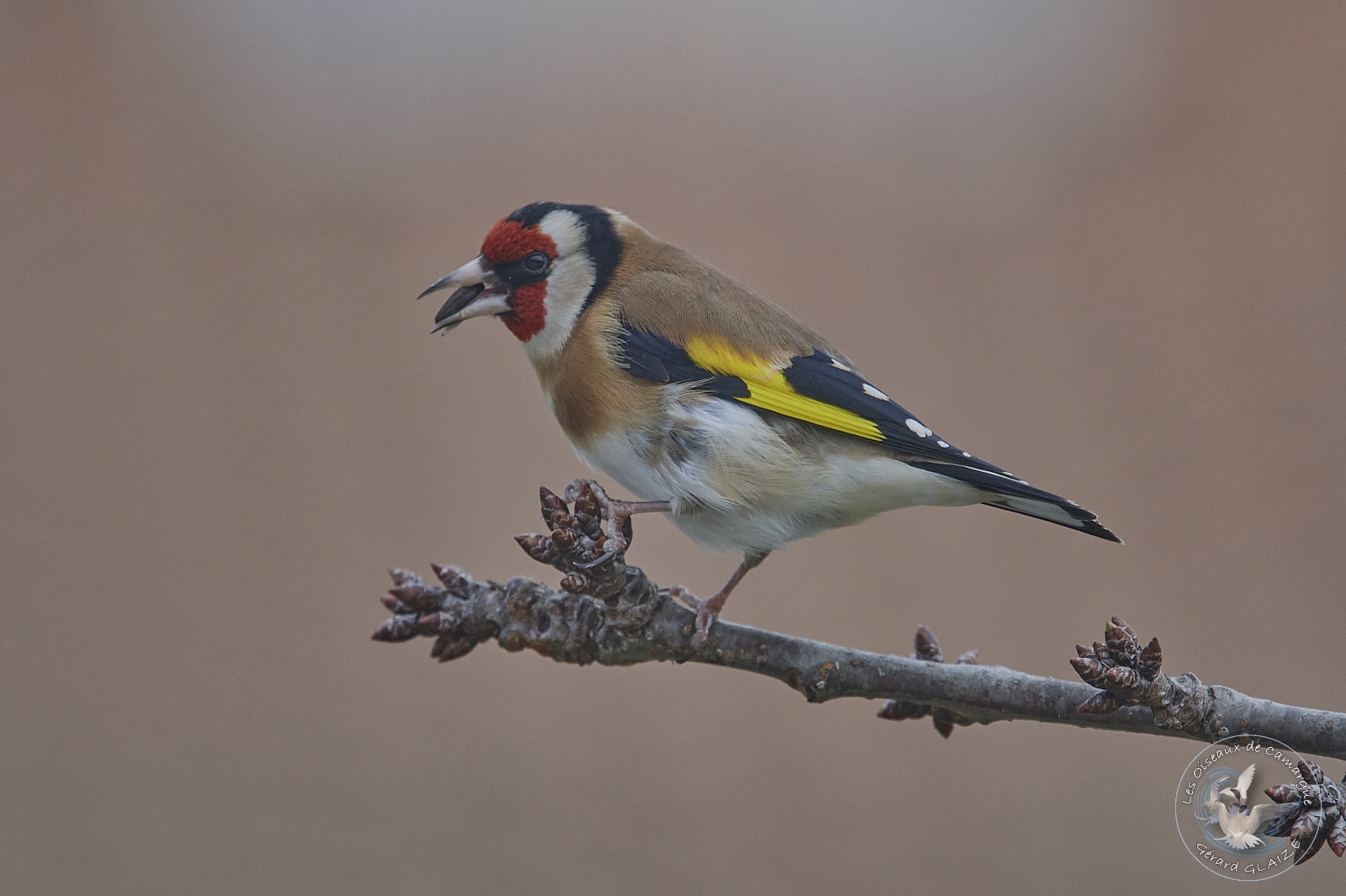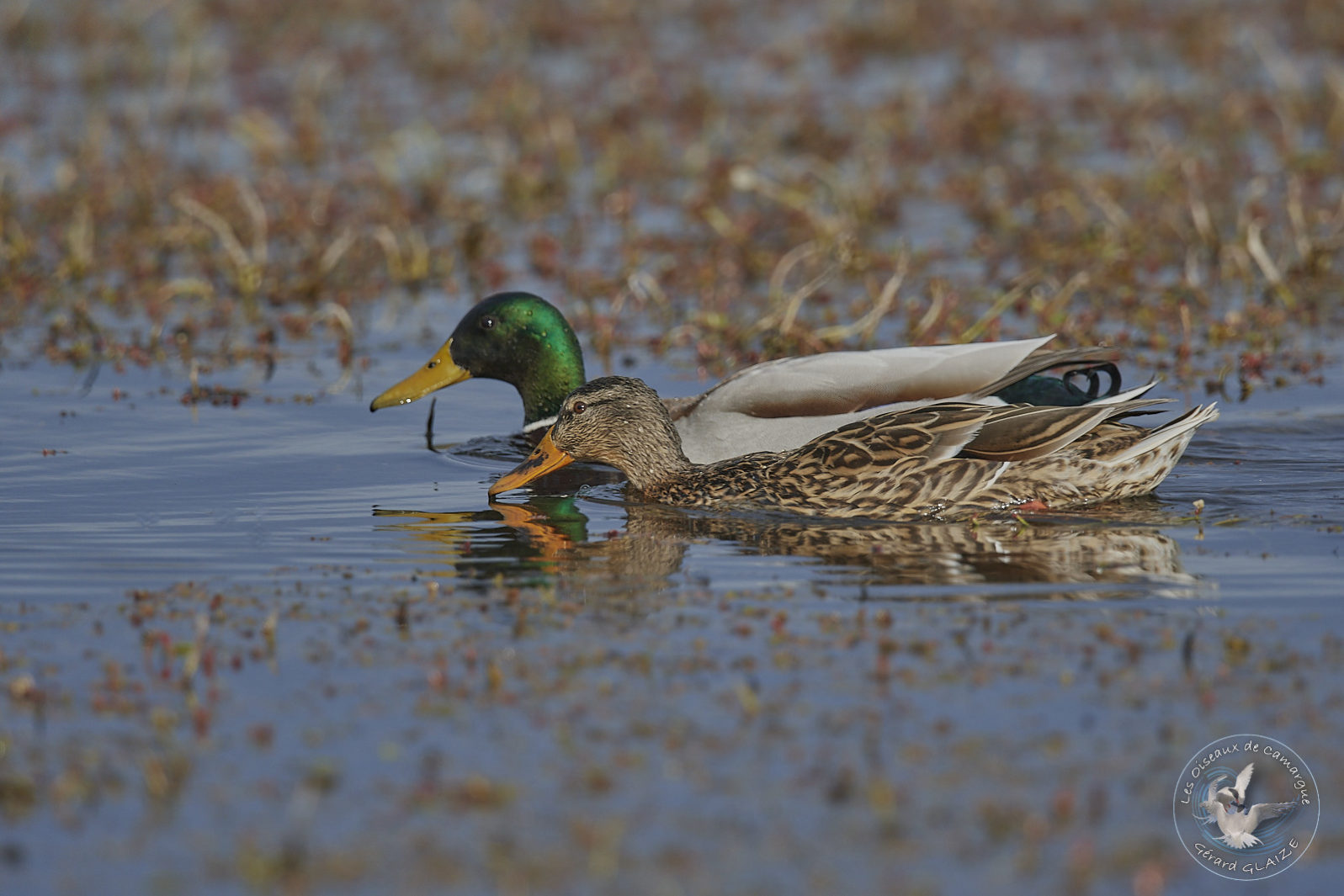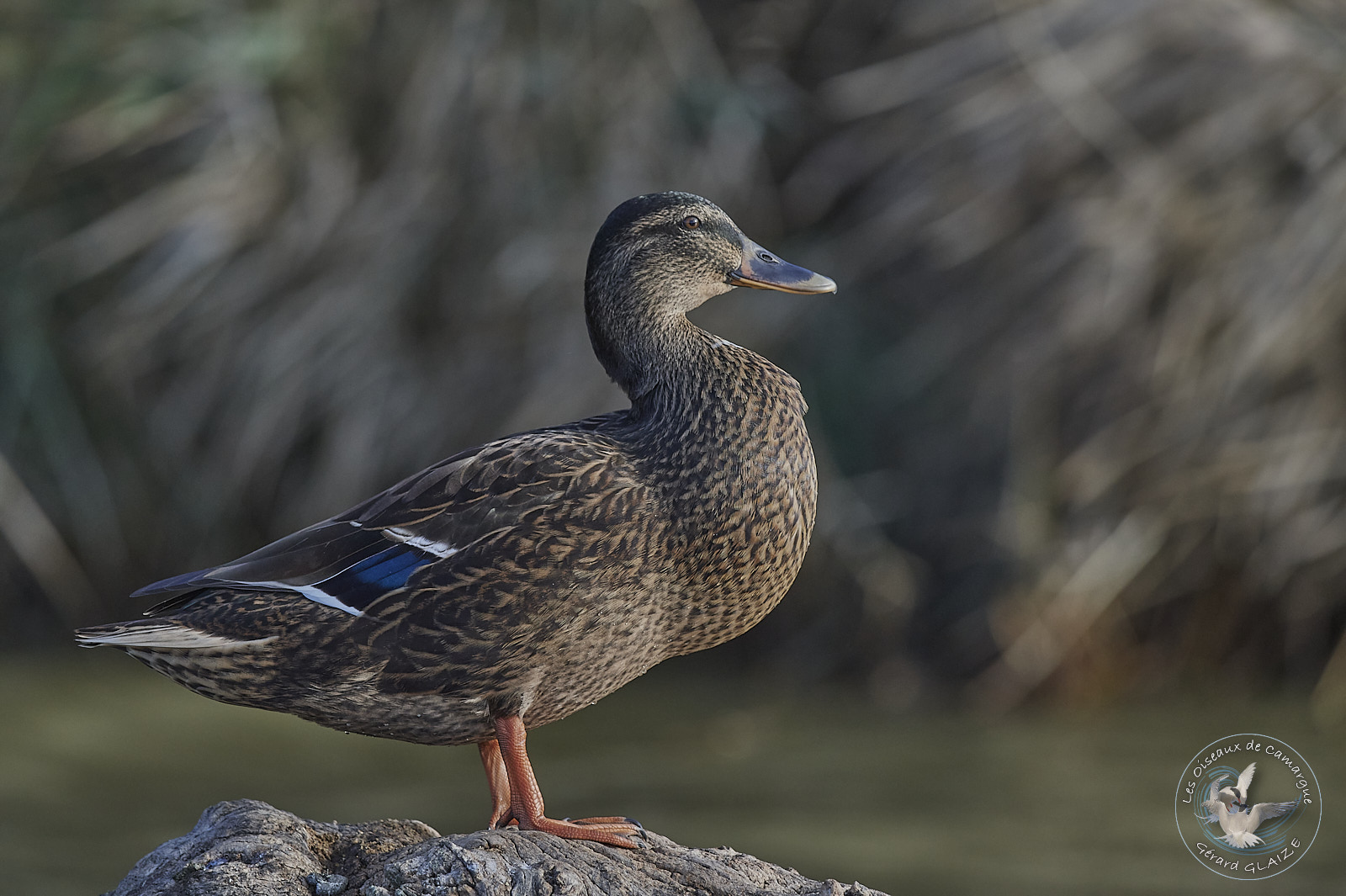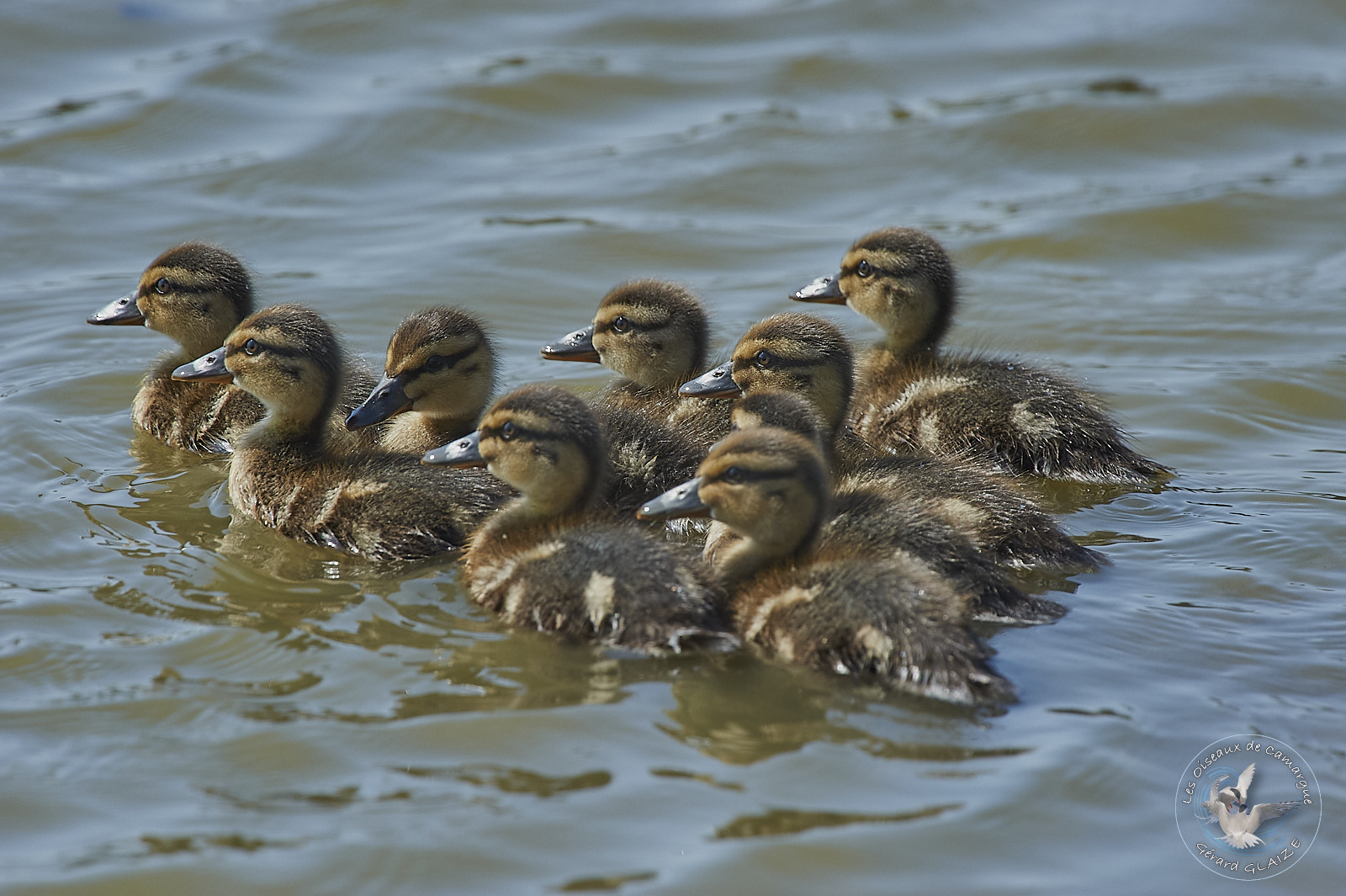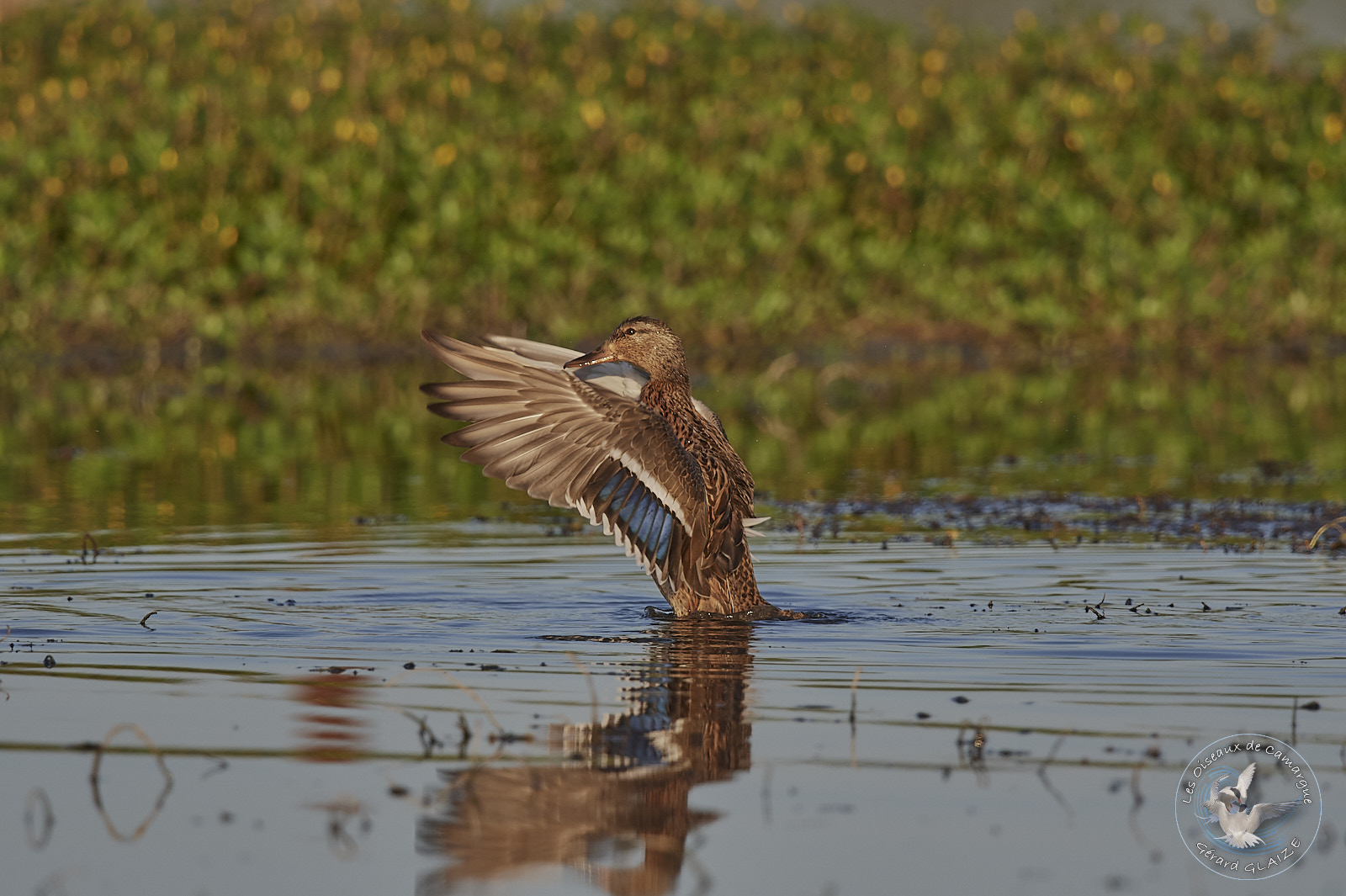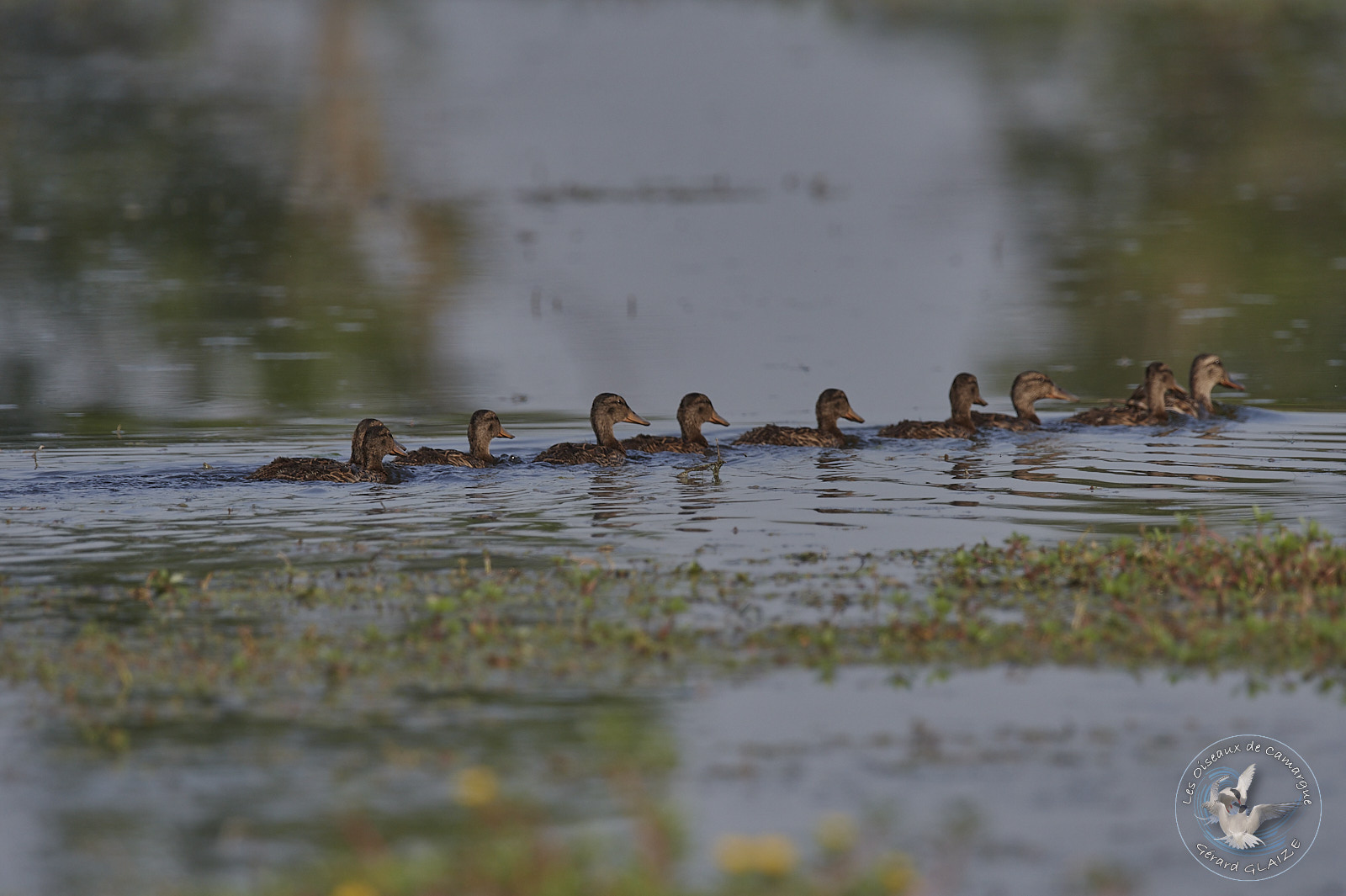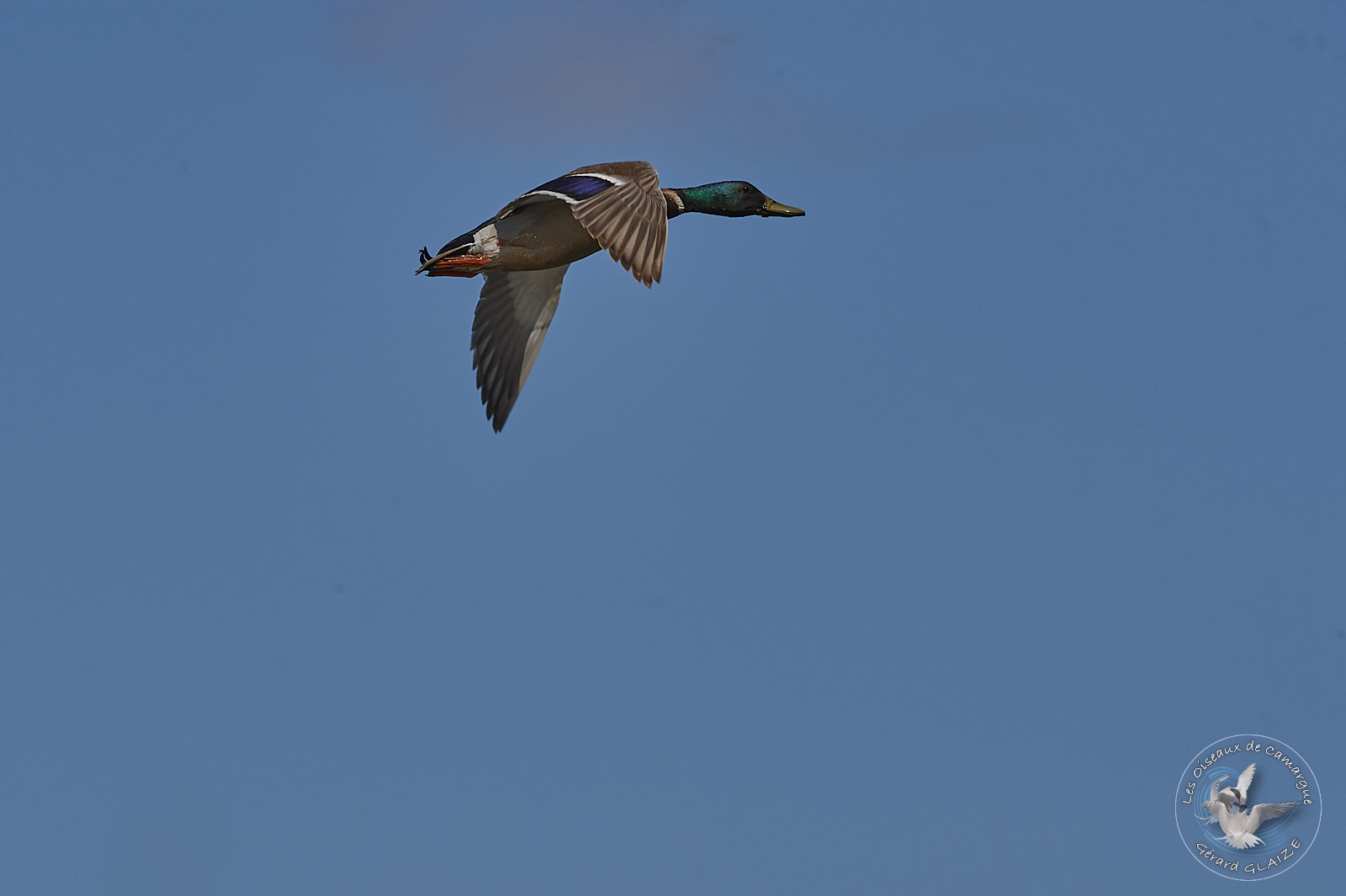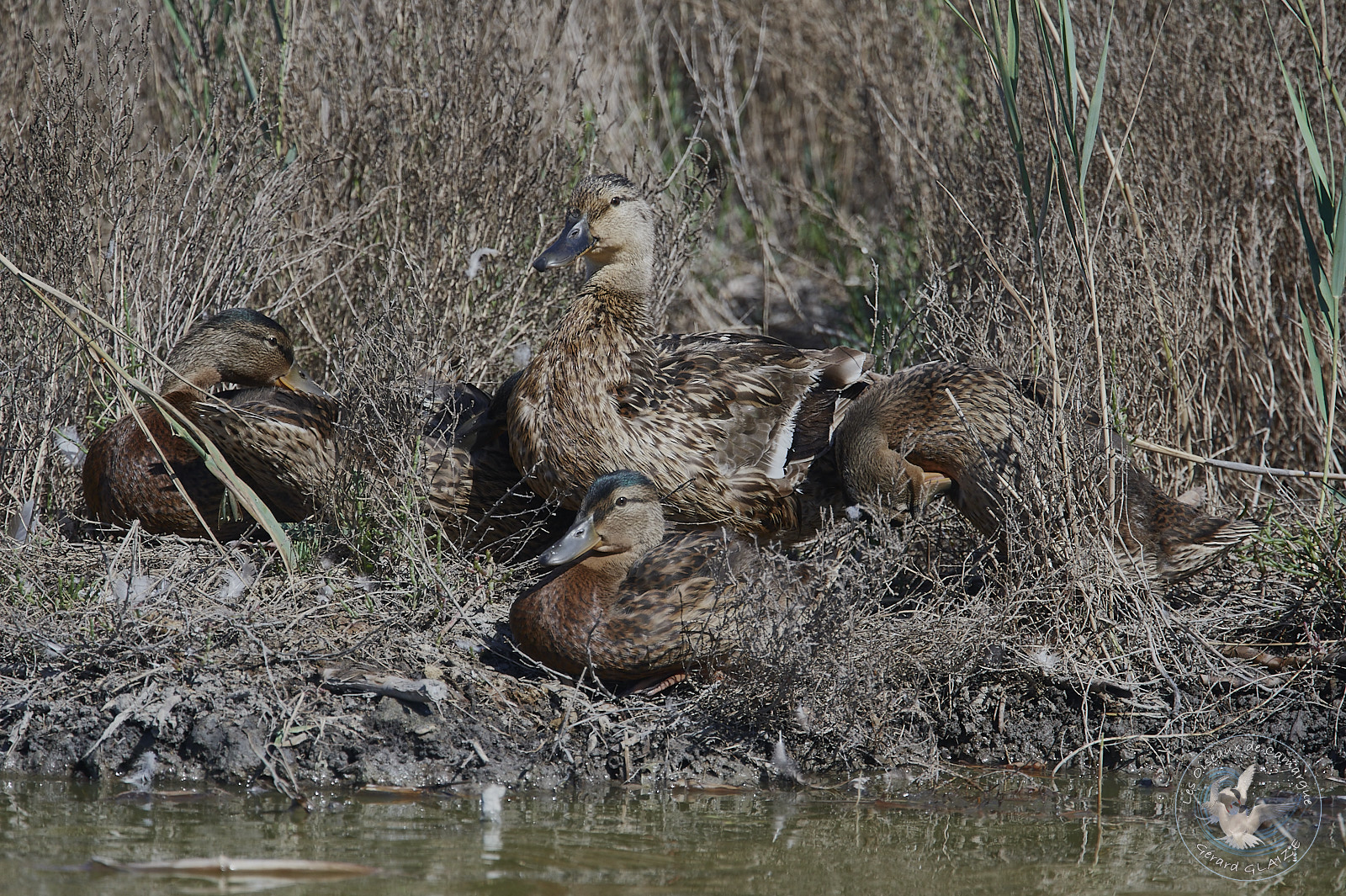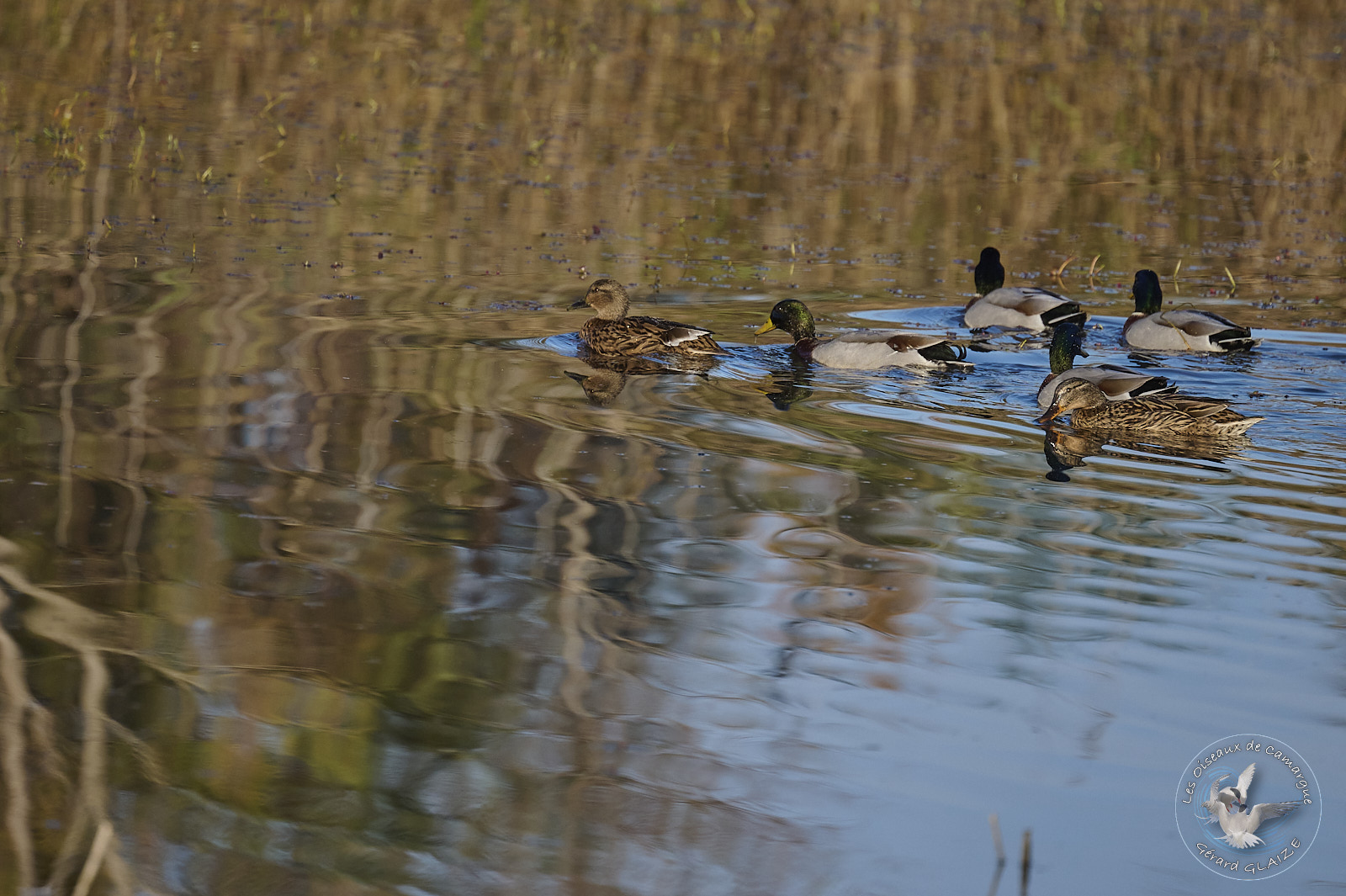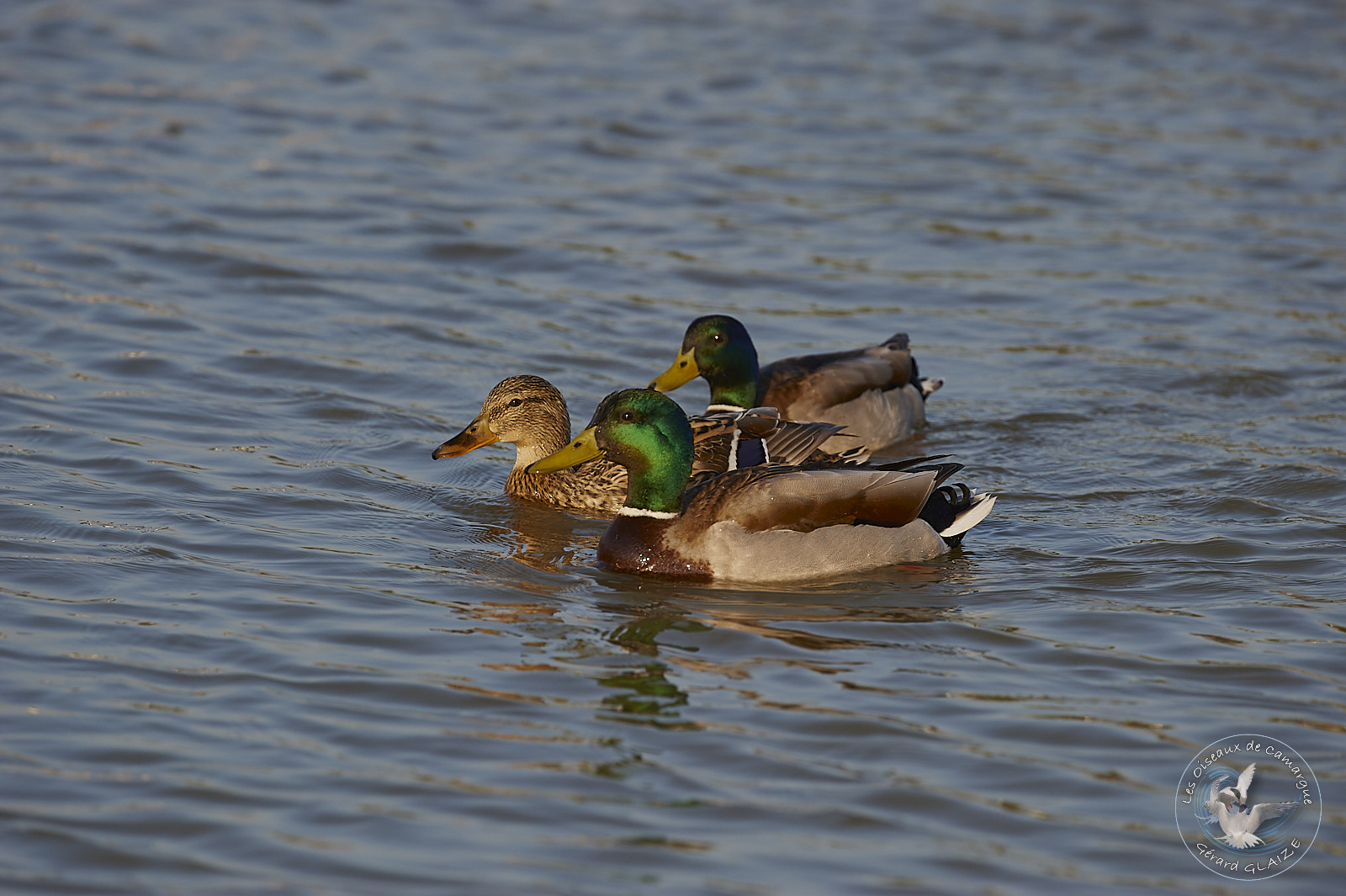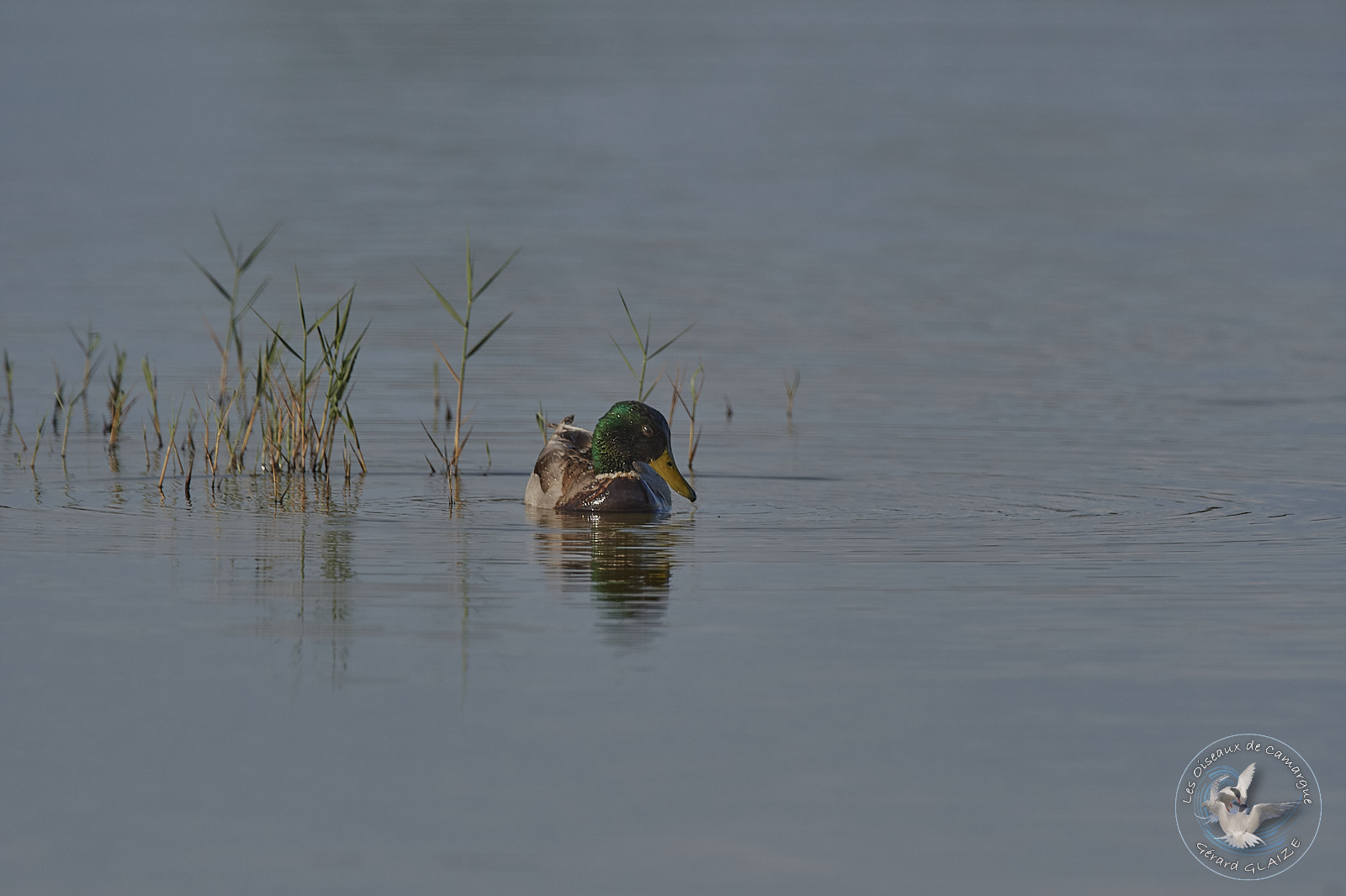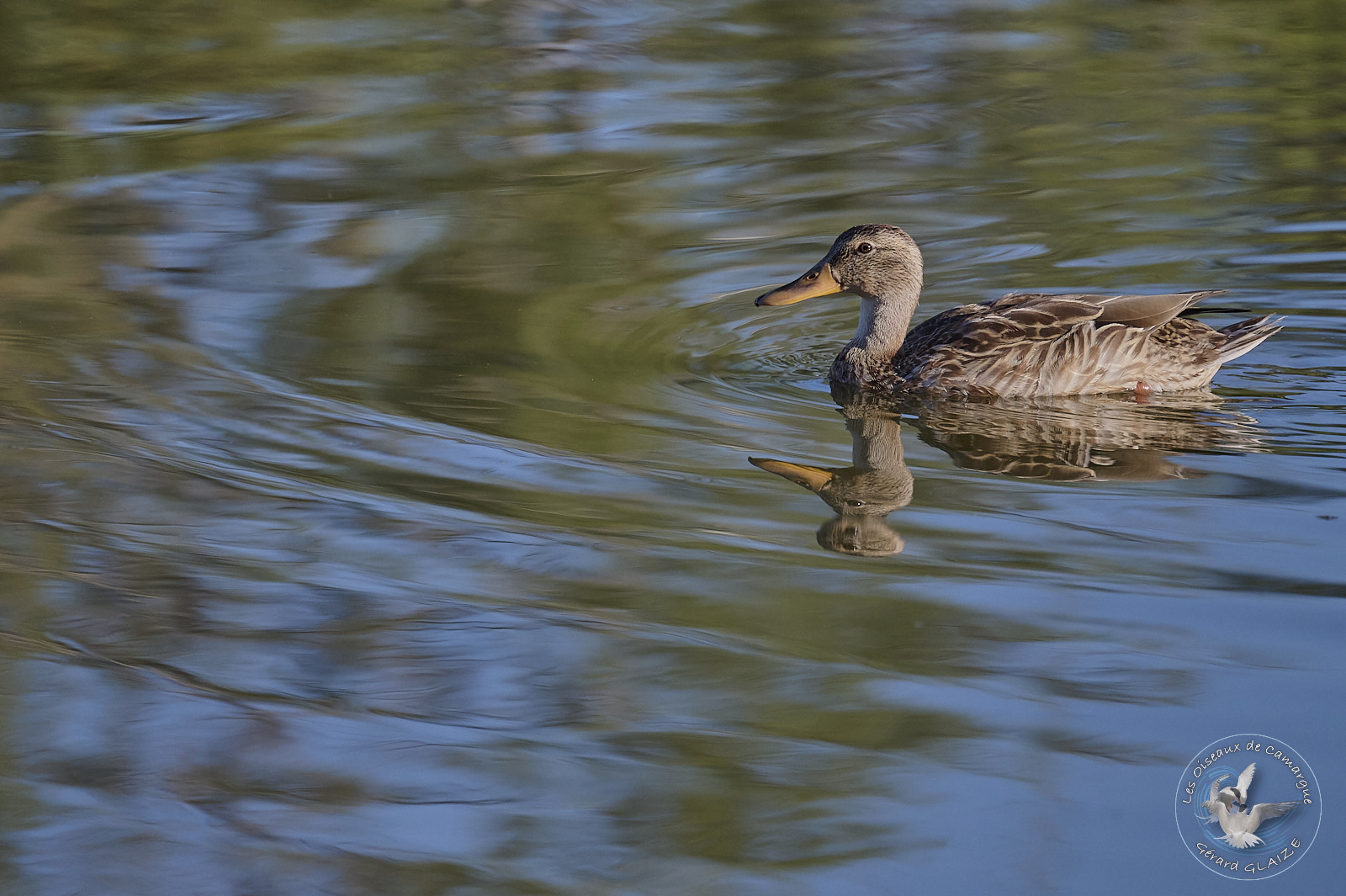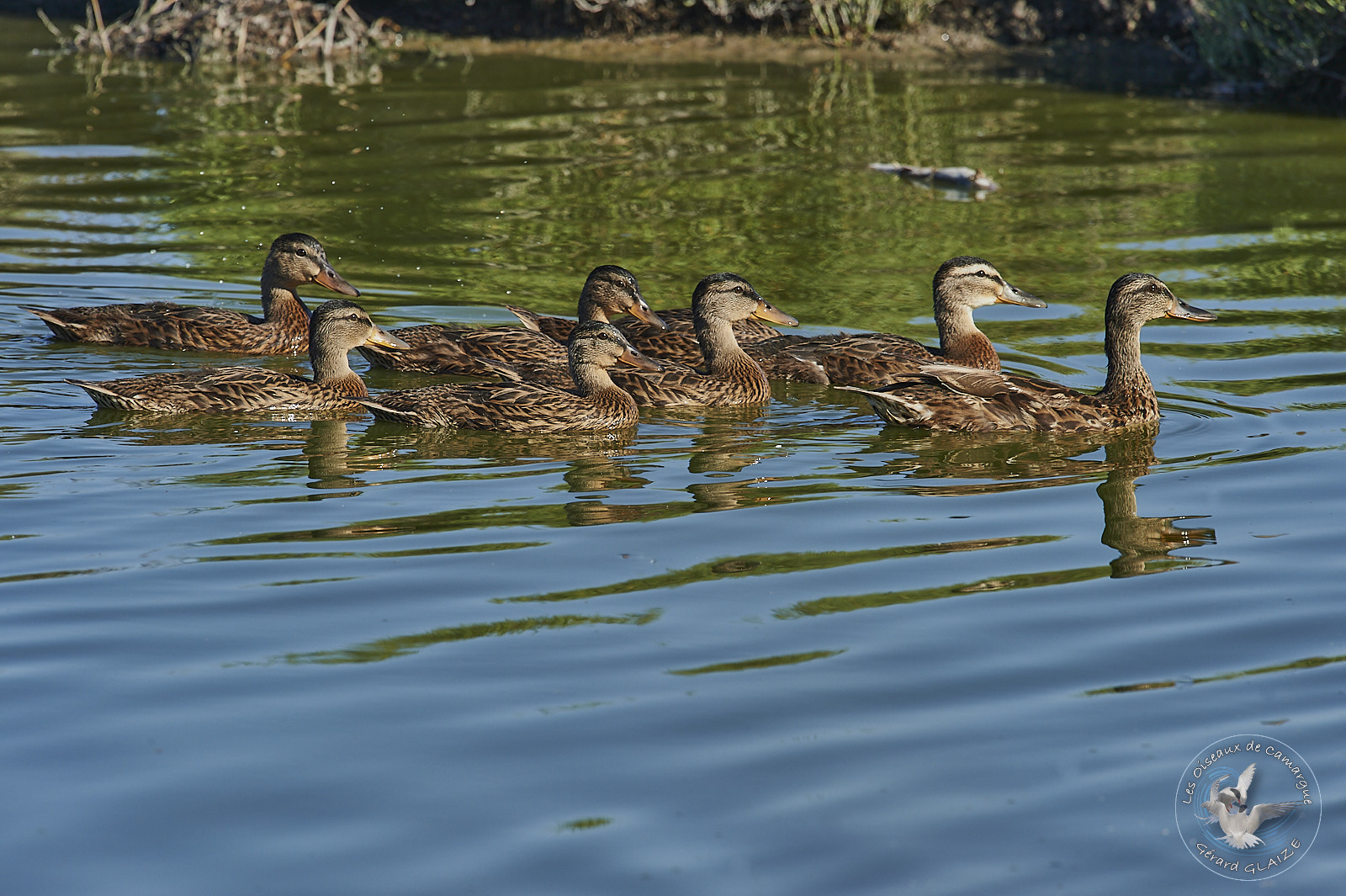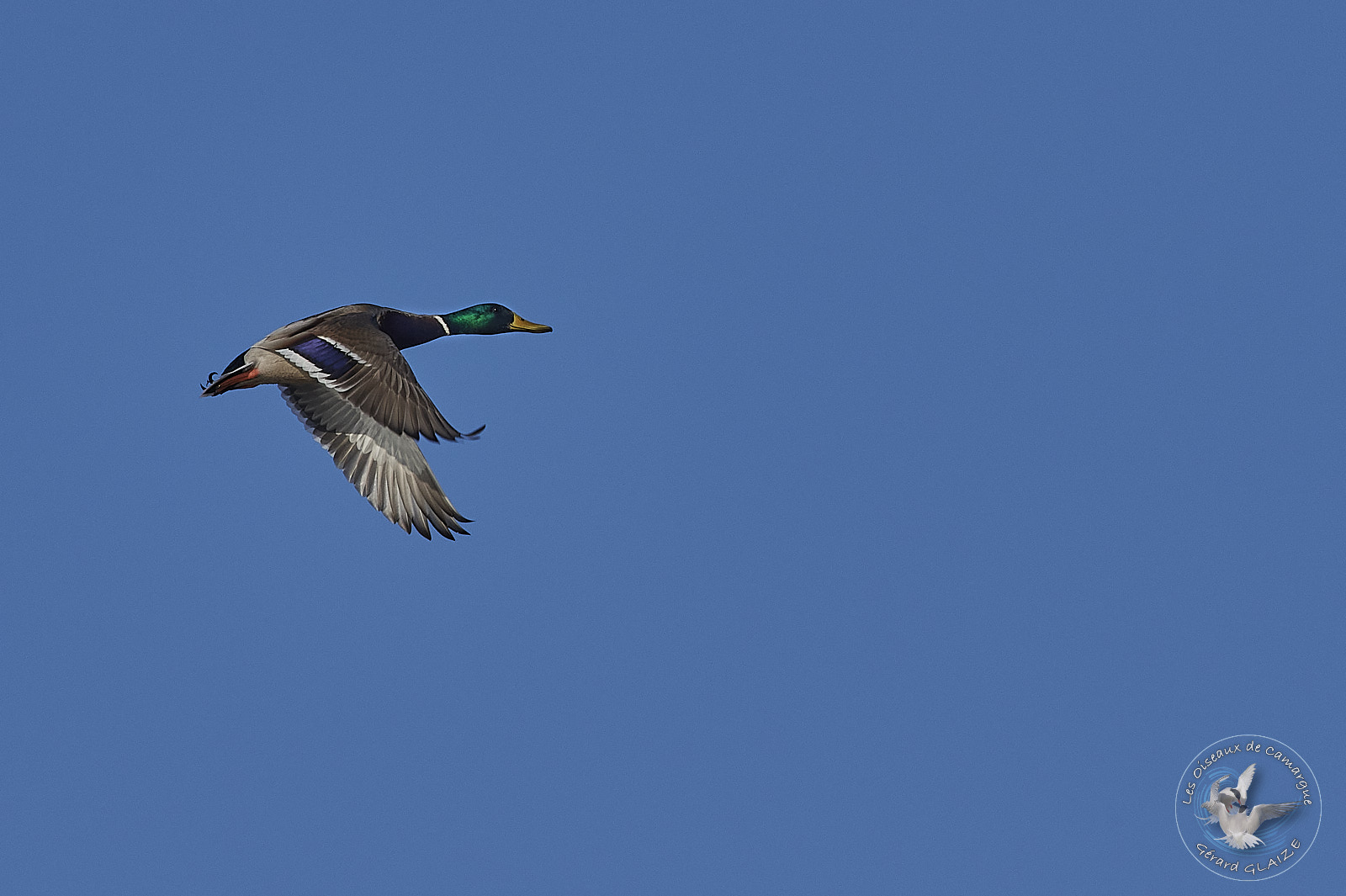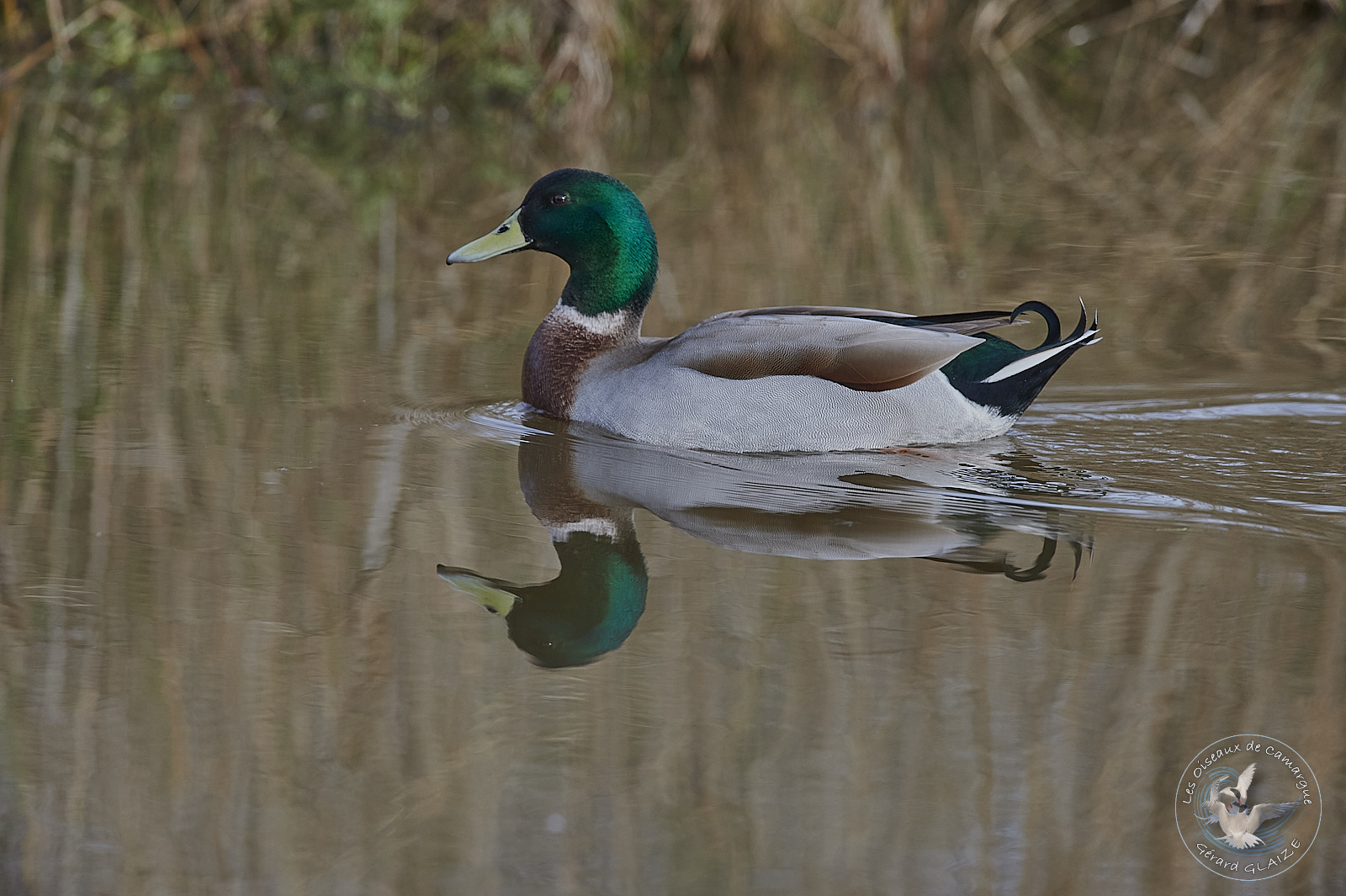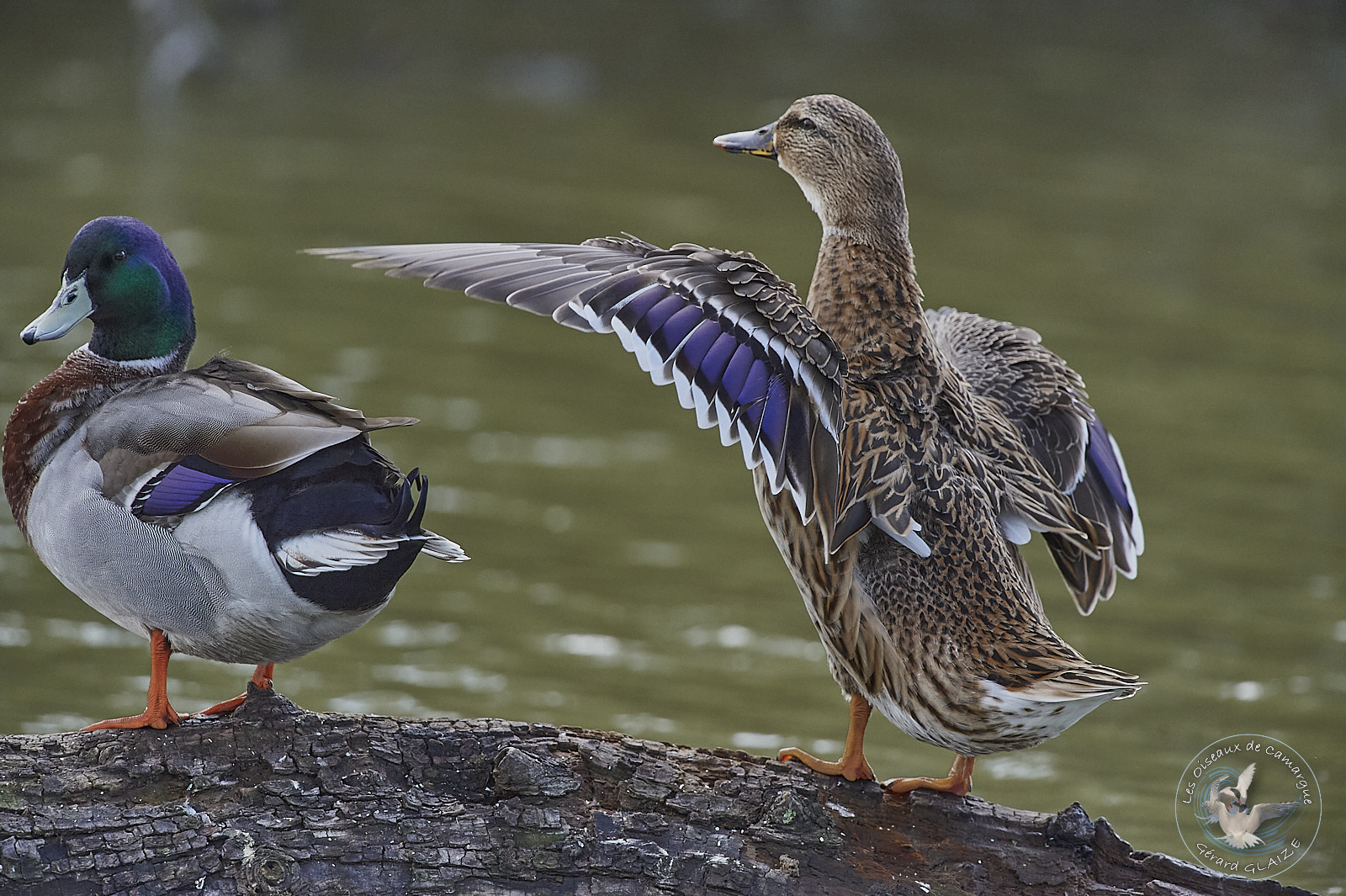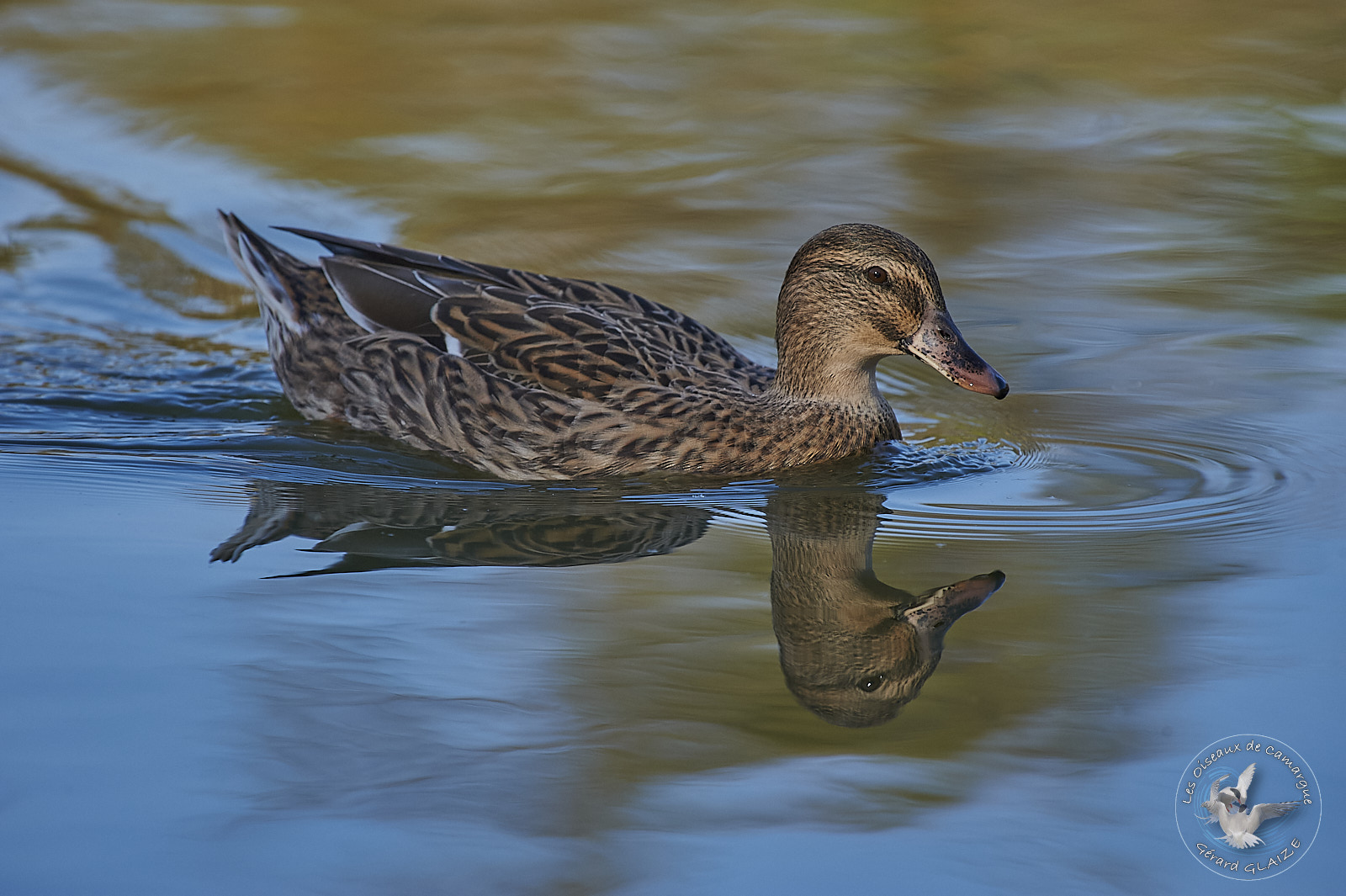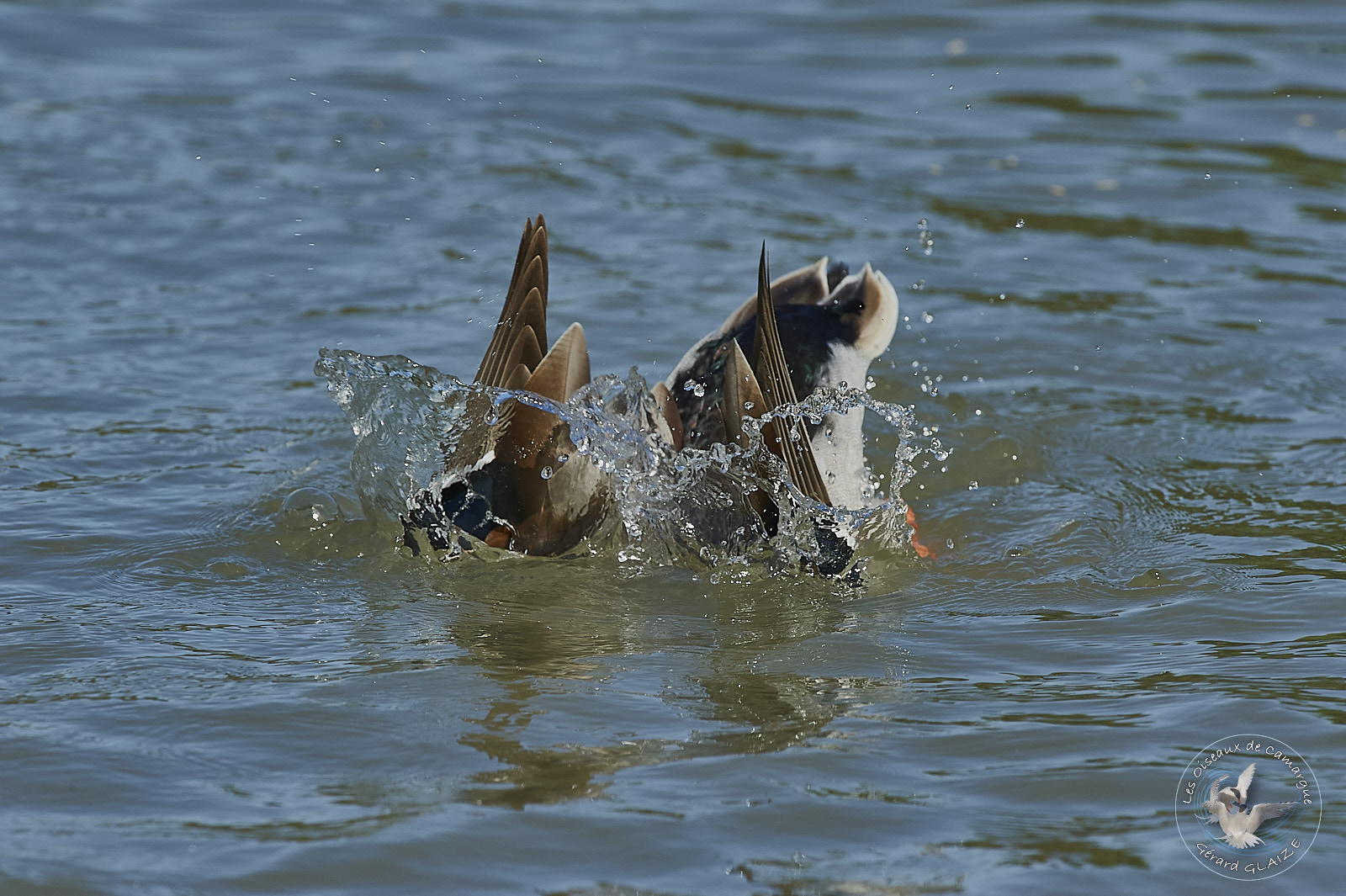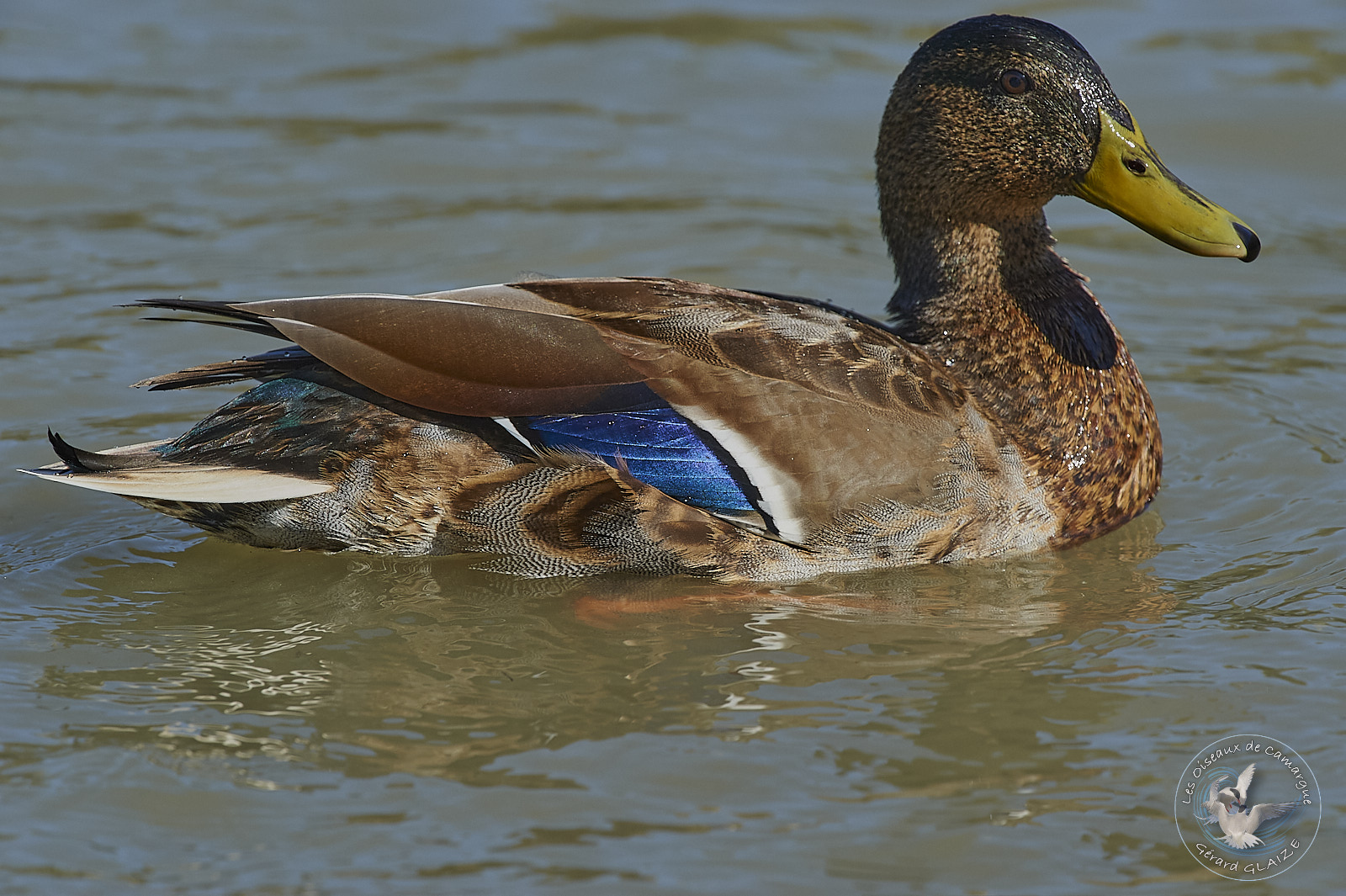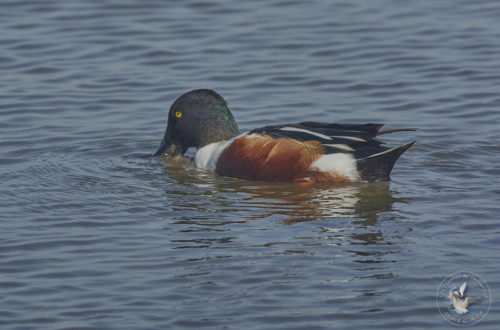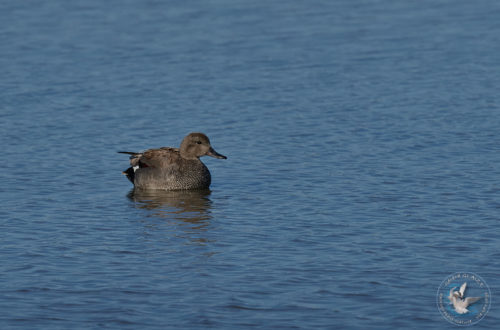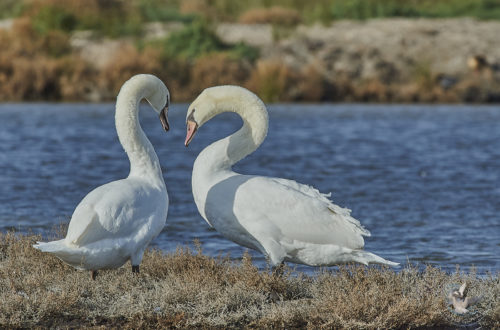The Mallard
The Mallard is a species of bird of the order Ansériformes, of the family Anatidae. It is the best known and recognizable of all ducks, due to the existence of breeds of domestic ducks descended from this species.
The male of the wild populations is easily recognizable, during the nuptial period, by his shiny green head. The rest of the plumage is grey-brown to white, with a blue-purple wing patch; the beak is yellow. After the breeding season, it moults and takes on its eclipse plumage (of a beige color similar to that of juveniles and females) and loses its flight feathers. He then lives in the reeds and tall grass. About three weeks later, the males then resume their nuptial plumage, this period runs from June to August.
The female has brown bill and duller plumage. The male’s beak is yellowish or greenish, more or less spotted with black, and its legs are orange-red. Males, females, and juveniles feature an iridescent blue-purple speculum edged with white bars on the wings. The head of the ducklings is more orange with a crown, the back, a bar on the eye and the dorsal side of the wings dark brown, the chest white. Domestic ducklings are most often completely yellow.
The Mallard
Scientific name : Anas platyrhynchos
Family : Anatidae
Length: from 50 cm to 60 cm – Wingspan: from 81 cm to 95 cm
Weight : from 850 gr to 1.400 gr
IUCN Conservation Status: LC
Flight
The mallard has a fast flight for its large size. They are agile birds that can fly almost vertically. It flies with head and neck stretched forward, with shallow and rapid wing beats. Its speed can reach 80 km/h.
Habitat
The mallard lives in any kind of wetland, calm rivers, ponds, fresh or salt water marshes, fresh water lakes, estuaries and sometimes also sheltered coastal bays. It needs floating and emergent vegetation to provide it with its food, aquatic invertebrates and the seeds of these plants.
Regime – Diet
The mallard belongs to the group of dabbling ducks, which thus prefer to feed on the surface, or at shallow water depths, advancing with circular and alternating kicks: they plunge their heads into the water and tilt towards the forward, allowing it to reach the bottom of the water with its beak. It also ventures onto grasslands to graze. It is omnivorous and feeds on fish and grasses, seeds and worms, frogs and insects.
Courtship ritual
The mallard is monogamous but changes partners at each reproductive period. Several males court a female, some even being able to mate without performing a courtship display, more or less forcefully. Courtship takes place on the water throughout the winter, long before the breeding season. The males circle around the female. They stretch their necks then throw them backwards. They straighten up, inflating their chest and whistling, then they raise their tail feathers two or three times, finally they place their head forward at water level and start to turn in all directions.
Nesting
The laying can take place as early as February, especially in sedentary birds, and until July, depending on the latitude. The nest of the mallards is rudimentary and the choice of the place without sophistication, it is generally built on the ground, hidden in the dry grasses and the reeds, in the swamps or on the marshy grounds it can use the bare ground or hollow trees. It is made of twigs and down that the female plucks from a particular area of her chest. The number of eggs varies from 5 to 15. Only the female incubates, for about 28 days. Indeed, the plumage of the female allows it to go unnoticed in the middle of the vegetation. After hatching, the female alone takes care of the ducklings. She leads them to the nearest body of water and teaches them how to swim and feed themselves.
Protection
The mallard is renowned as a game bird throughout its range, but populations are not endangered. This species, like other ducks, is losing its wet habitat, but it is managing to adapt to areas of urban parks and other places where water is present.
Cry
The Mallard duck quacks, cackles or nasillates. The female’s call is loud and hoarse, the male’s softer.
Useful Links
Other Links
- You can see the article from my site “Birds of Camargue” for more information on the Camargue and the Birds.

